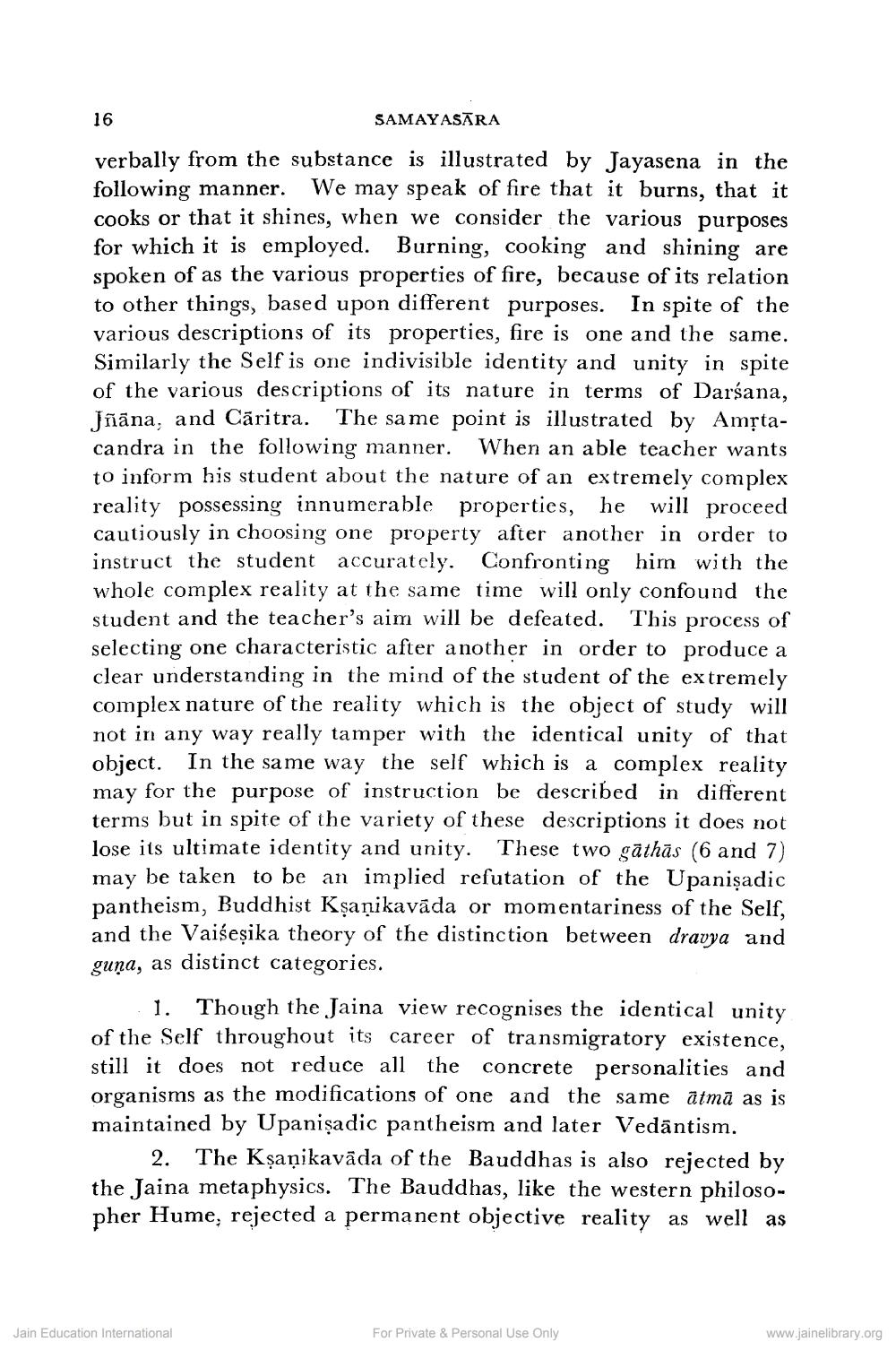________________
16
SAMAYASĀRA
verbally from the substance is illustrated by Jayasena in the following manner. We may speak of fire that it burns, that it cooks or that it shines, when we consider the various purposes for which it is employed. Burning, cooking and shining are spoken of as the various properties of fire, because of its relation to other things, based upon different purposes. In spite of the various descriptions of its properties, fire is one and the same. Similarly the Self is one indivisible identity and unity in spite of the various descriptions of its nature in terms of Darsana, Jñāna, and Cāritra. The same point is illustrated by Amrtacandra in the following manner. When an able teacher wants to inform his student about the nature of an extremely complex reality possessing innumerable properties, he will proceed cautiously in choosing one property after another in order to instruct the student accurately. Confronting him with the whole complex reality at the same time will only confound the student and the teacher's aim will be defeated. This process of selecting one characteristic after another in order to produce a clear understanding in the mind of the student of the extremely complex nature of the reality which is the object of study will not in any way really tamper with the identical unity of that object. In the same way the self which is a complex reality may for the purpose of instruction be described in different terms but in spite of the variety of these descriptions it does not lose its ultimate identity and unity. These two gāthās (6 and 7) may be taken to be an implied refutation of the Upanisadic pantheism, Buddhist Kşaņikavāda or momentariness of the Self, and the Vaisesika theory of the distinction between dravya and guna, as distinct categories.
1. Though the Jaina view recognises the identical unity of the Self throughout its career of transmigratory existence, still it does not reduce all the concrete personalities and organisms as the modifications of one and the same ātmā as is maintained by Upanișadic pantheism and later Vedāntism.
2. The Kșaņikavāda of the Bauddhas is also rejected by the Jaina metaphysics. The Bauddhas, like the western philosopher Hume, rejected a permanent objective reality as well as
Jain Education International
For Private & Personal Use Only
www.jainelibrary.org




